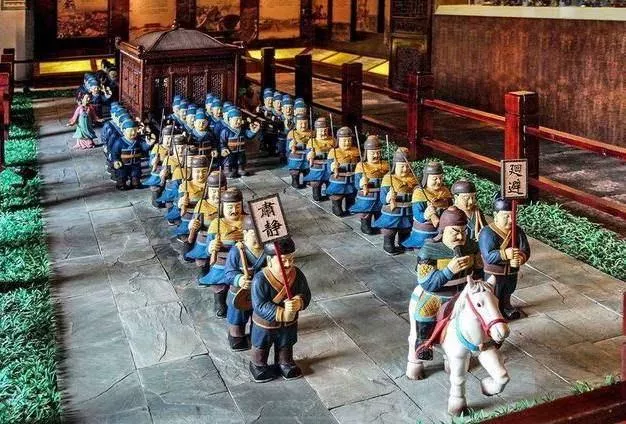There is no doubt that the RV market in the world today is dominated by European and American countries, while the RV market in China is still in a booming stage of development.
When tracing the history of caravans, European and American academics generally define caravans as "road vehicles with sleeping facilities designed for leisure purposes", where the definition of "road vehicles" is not limited to self-powered vehicles with internal combustion engines, but also includes horse-drawn carriages. The earliest prototypes of caravans are generally recognized in European and American scholarship as the horse-drawn caravans of Rome in the first world; modern caravans are the horse-drawn caravans of the early 19th century; and modern self-powered caravans began in the late 19th century with the rise of the internal combustion engine.
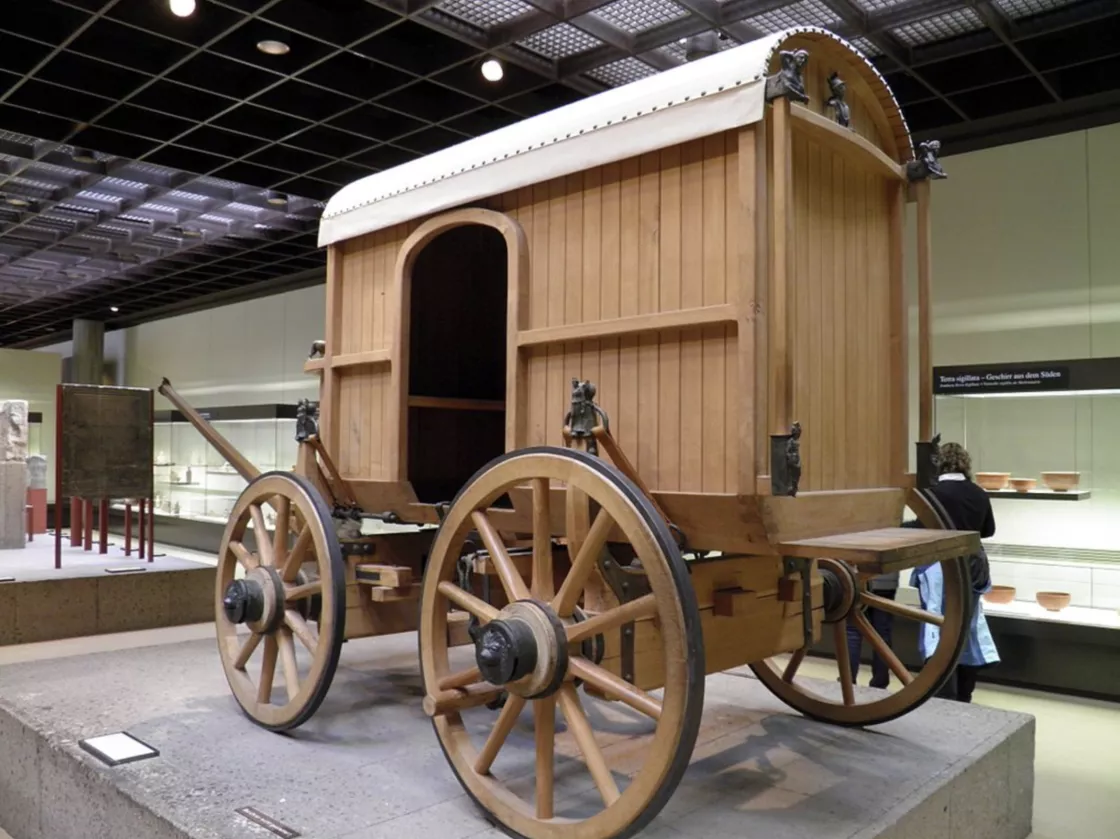
A restored 1st century AD Roman 'carriage' with basic sleeping facilities Photo by Römisch-Germanisches, Germany However, when it comes to carriages, we Chinese are no strangers to them, as we see them everywhere in costume dramas, and the size of them seems to make it easy to put down a bed. Did ancient China have carriages with sleeping facilities like the Roman carriages?
The world's first caravans were in China?
In June 2017, in the "Zheng State No. 3 Carriage Pit" of the "Zheng Han Forbidden City" in Xinzheng, Henan Province, which has been under archaeological excavation since the 1960s, another batch of "fragrant cars and horses" from more than 2,400 years ago was unearthed. One of the saddle carriage is the largest and most luxurious carriage found in the "Zheng Han Forbidden City" at that time, and Sun Chunling, the excavation project site manager, introduced "according to the present day, it is just like a luxury carriage, it was a carriage for the king to go out for inspection, visit, or hunting, and could also lie down to rest when tired. The car was about 2.1 meters long and 1.6 meters wide, with brown and brown-red paint flakes on the canopy and traces of matting on the canopy, so it can be inferred that it had sleeping facilities.
It is interesting to note that Confucius had bluntly stated that "to release the sound of Zheng is to distant sycophants; the sound of Zheng is obscene, and sycophants are dangerous", and Mencius also implicitly defined the sound of Zheng and Wei as "worldly music", which is not on the same level as pure ritual music. This shows that the people in the Zheng region were more spontaneous and liked to enjoy themselves; in addition, Xia Ji, one of the four most recognized beauties of the Spring and Autumn Period, who was a siren and adulterer and had committed adultery with several vassals and great officials, came from Zheng. With such a popular style, it is only natural that such a luxurious caravan would appear in Zheng.
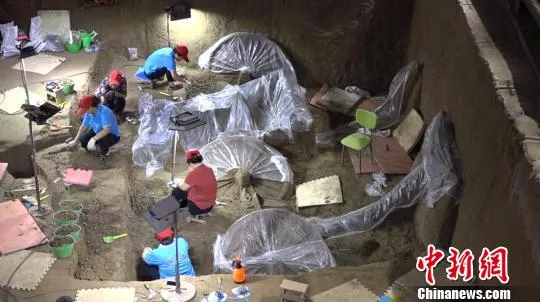
"Zheng Han Forbidden City" excavation site Photo source CNN No coincidence, in the Ming Dynasty, Wang Shizhen's "Biography of the Chief Minister since Jiajing" also recorded a luxury "caravan The anecdote of a luxury "caravan" is also recorded in Wang Shizhen's "Biography of the Chief Minister since Jiajing" of the Ming Dynasty.
According to records, when Zhang Juzheng's father died in the sixth year of the reign of Emperor Wanli and Empress Li, Zhang Juzheng, the first minister, returned home in a hurry after only three months of taking care of his father's funeral. On the way, "Juzheng sat on a gaiter, which was created by Qian Pu, the guardian of Zhending, to serve. In front of it was a heavy room, and behind it was a bedchamber for resting. The two hipped wings were each decorated with a child, and the left and right attendants waved incense for the toys, which were lifted by 32 pawns.
Although in a sense, the world's first 'caravans' were probably in China, they were limited to the powerful class and were not common. In terms of the systematic development of caravans, we still have to move our attention back to Europe and America.
It could be argued that wagons used for long-distance travel were the prototype of the modern caravan. Unlike carriages that were generally used to carry goods or people for short distances, these carriages were often enclosed structures to withstand rain and high winds, had a simple suspension structure for shock absorption, and had flat floors inside for comfort because they had to seat people for long periods of time.
In modern times, the first use of horse-drawn carriages for accommodation was by the owners of European circuses and zoos in the early nineteenth century, who often stayed in their horse-drawn caravans when they travelled to different regions for touring shows and exhibitions, in order to facilitate the care of their animals and to save money. In Dickens' novel The Old Curiosity Shop, published in 1840, it is described that when Mrs. Jarley, the wax shop owner, went around to show her wax exhibits, her horse-drawn caravan often housed homeless preachers and journeymen doctors on the road.
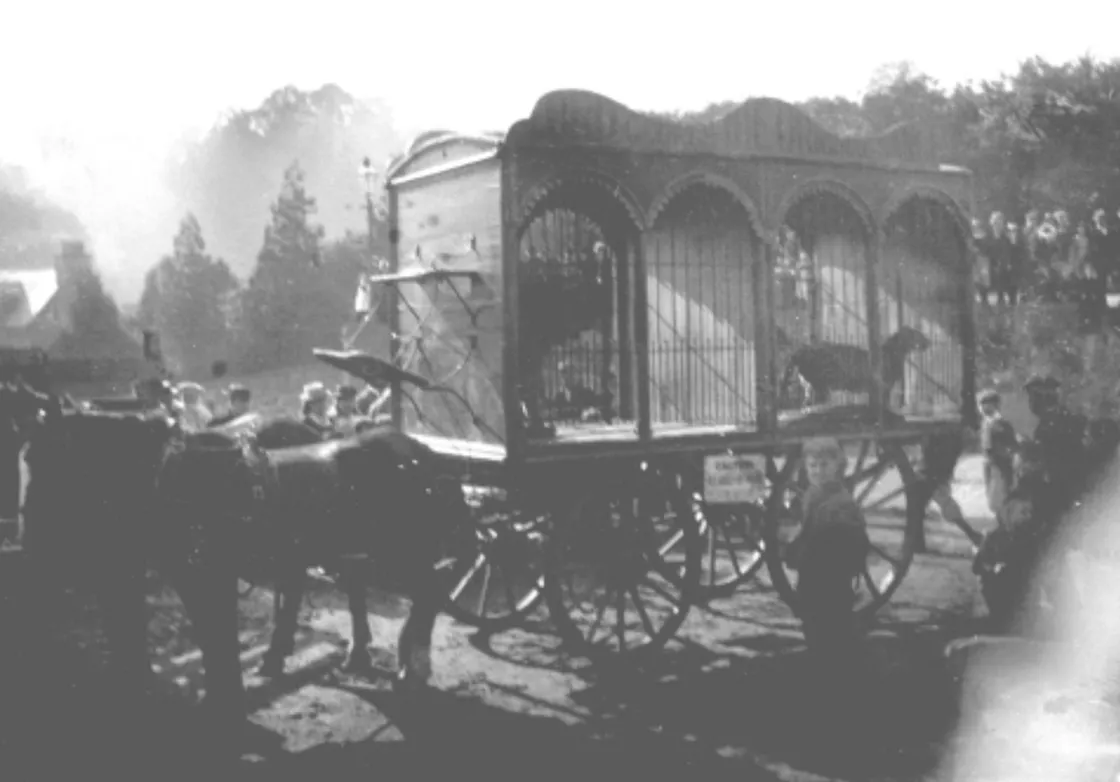
Horse-drawn caravans, taken in 1856, also appeared in the English countryside during this period as fee-paying public horse-drawn caravans, which were poorly equipped, slow-moving They were used mainly by travellers. By the mid-nineteenth century, with the advent of the railways, these horse-drawn caravans had disappeared. European gypsies then improved on the horse-drawn caravan by making wheeled cabins that focused on the living experience, with beds, hot and cold water, kitchenettes, etc., and could be pulled by horses when needed. This modification is seen as the prototype of the trailer caravan and has profoundly influenced American RV culture through immigration.
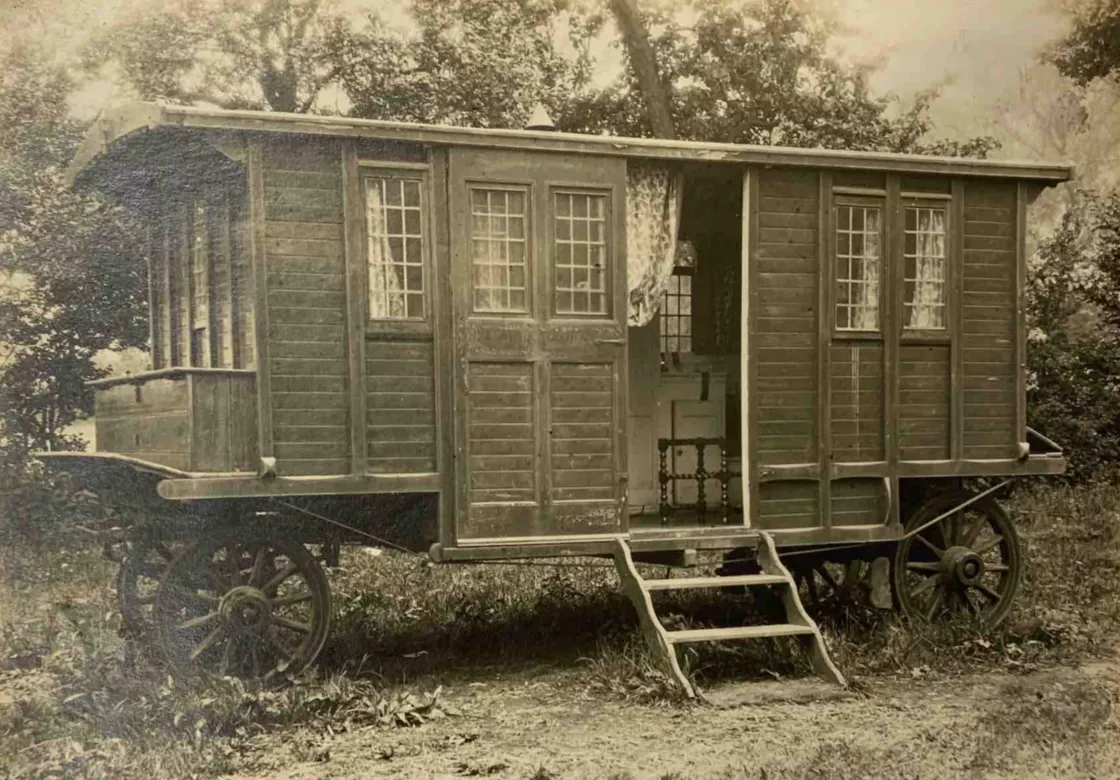
Well-made gypsy horse-drawn trailer image source historycooperative.org 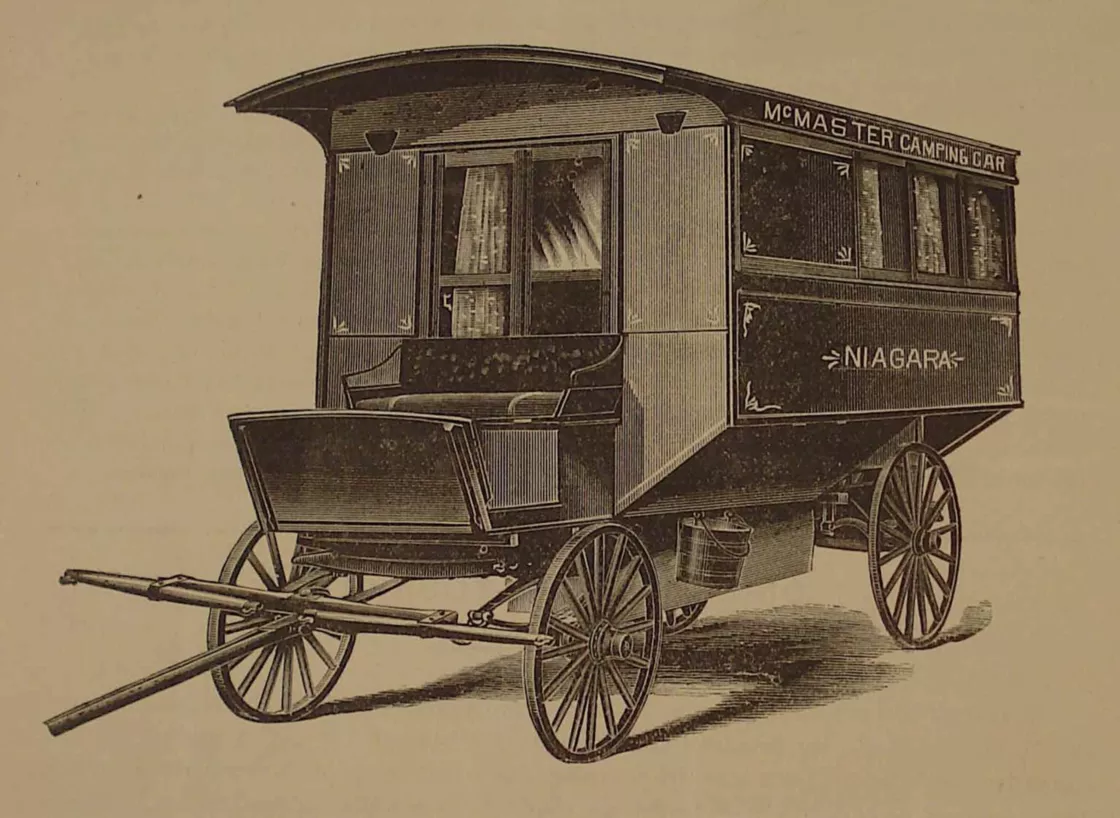 The first patented RV in American history in 1889, showing the gypsy influence. At the end of this phase, the first true RV was born, the Rover, designed and built in 1884 by a manufacturing company known for building railroad cars, with an outside awning, a bench seat, a water tank, a kitchen area, a utility area, lockers, storage shelves, and other familiar features of modern RVs.
The first patented RV in American history in 1889, showing the gypsy influence. At the end of this phase, the first true RV was born, the Rover, designed and built in 1884 by a manufacturing company known for building railroad cars, with an outside awning, a bench seat, a water tank, a kitchen area, a utility area, lockers, storage shelves, and other familiar features of modern RVs.
The caravan is still kept on Broadway in the UK.
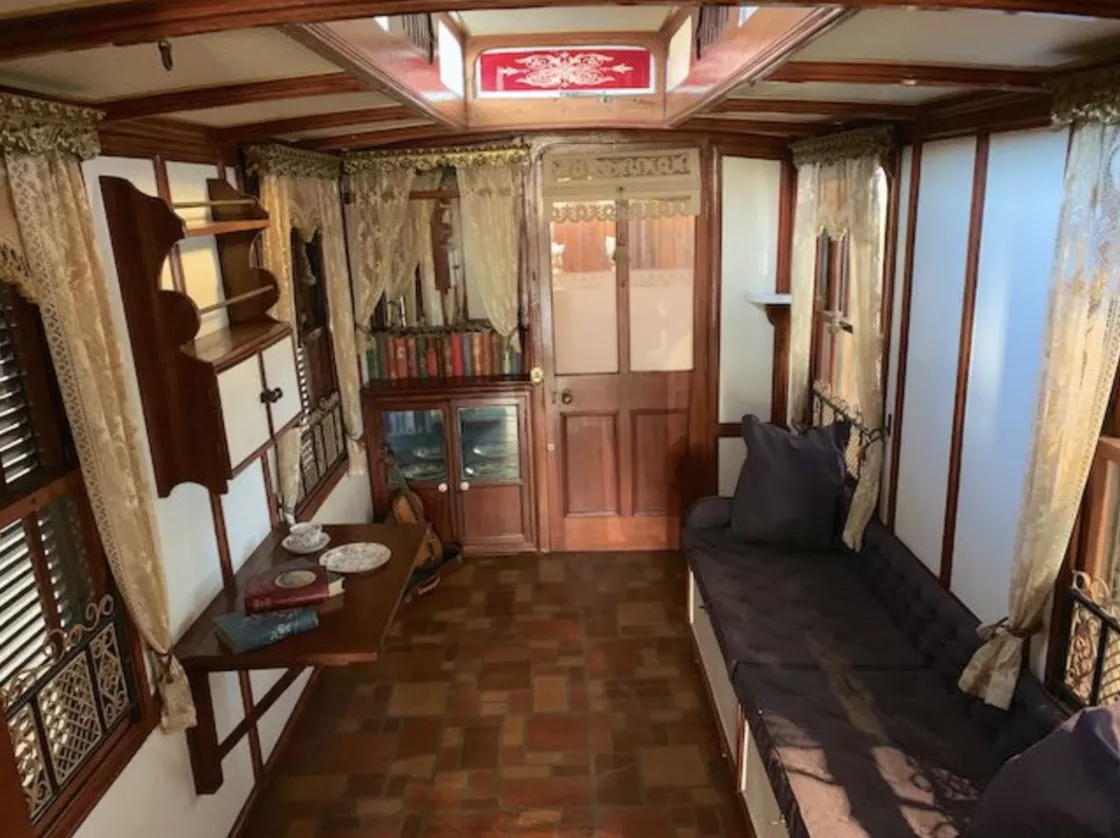
Interior of the 'Rover' Photo credit Cotswold Club, UK History of modern caravanning: from steam to internal combustion engines
The world's first steam-engine caravans and internal combustion-engine caravans were both born in France, and France is also the only country to have used steam-engine caravans.
France has abundant river water resources that can easily refill the steam engine boiler, and this inherent condition provides great convenience for the development of steam engine in France; at the same time, France has established well-connected and high-quality roads in the Napoleonic era, and the French government has also been supporting the development of automobile manufacturers and various automobile races, which has laid an excellent foundation for the automobile industry in France.
The first known steam caravan was built in 1896 for Prince Oldenburg, a Russian prince living in Paris Grande Diligence. With the rapid development of the automobile industry, the first caravan powered by an internal combustion engine - also built in France - appeared immediately afterwards in 1902. The owner had ambitiously prepared to take it on a trip around the world, but it only ended up in Russia. These early motorhomes were based on the ground-up conversion of lorries and were poorly powered, slow, noisy and extremely unreliable. And because of the poorly developed road network, these bulky caravans were many times limited to driving and staying on the main roads.
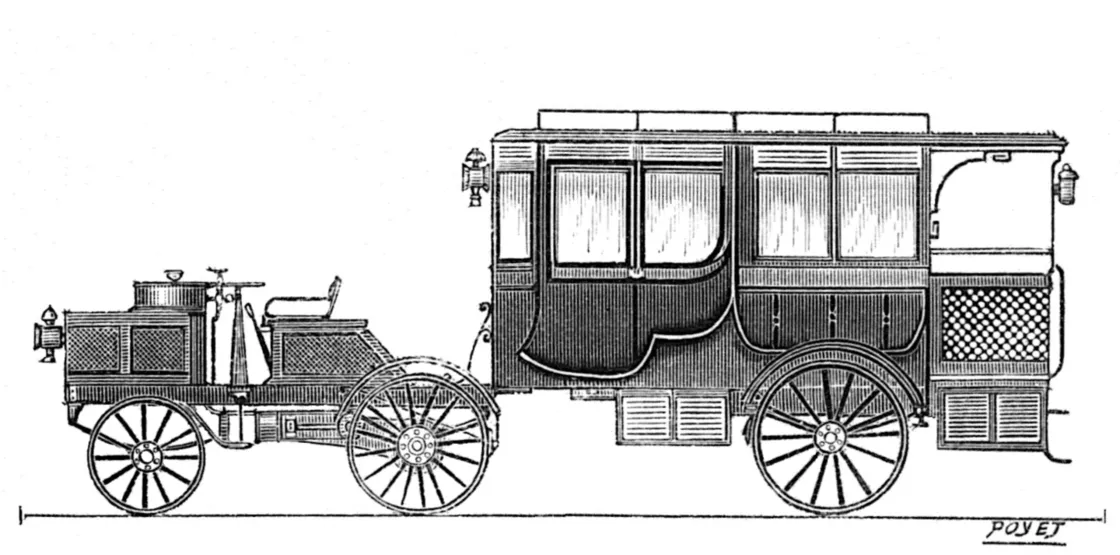
Prince Oldenburg's steam caravan Photo by CNAM.FR Around 1910, with the booming automobile industry, the selling price of internal combustion engine cars kept dropping and car sales exploded, at the same time the incomes and holidays of the European and American populations began to increase and most of the middle class began to enjoy camping, driving off to the countryside with tents, sleeping bags, coolers and other equipment, and then some of the more hands-on people started trying to fix various bits of kit to their cars.
In 1904, the first caravan was hand-assembled onto an internal combustion engine car that could sleep four people, was lit by incandescent lamps, and was equipped with a refrigerator and radio. Over the next decade, travel-loving Americans were keen to use wood and tents to convert RVs on internal combustion locomotives, which were fully equipped with refrigerators, kitchens, bathrooms and even bathtubs, and in some cases, telegraphs.
In 1915, a group of New Yorkers embarked on a journey in a luxury caravan some 7.6 meters long and weighing 8 tons, which generated numerous onlookers on the way to San Francisco, was admired by people along the way and became the talk of the nation at the time. Equipped with a generator and incandescent lights, a fully equipped kitchen, beds with soft mattresses, folding tables and desks, hidden bookcases, a gramophone, a transforming sofa with pillows, various small appliances, and even a second-story deck, this caravan was a masterpiece of early caravan technology and influenced the development of subsequent generations of caravans.
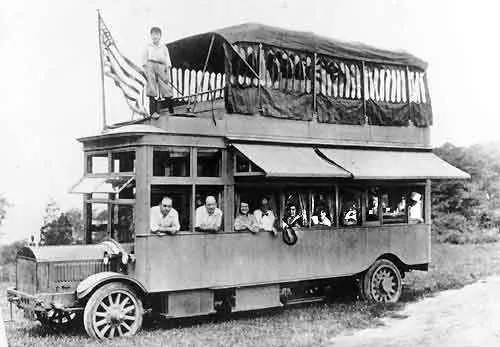
A family travels from New York to San Francisco in a luxury RV in 1915 Photo credit Library of Congress And by the 1920s, the development of the automobile industry led to more options for RV chassis, the most common of which was the Ford model, often modified by various RV manufacturers, with an interior boasting chairs, bookcases, a refrigerator, sink and electric stove, and some models even had a septic tank.
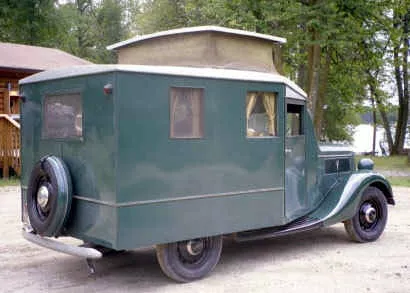
1927 Ford TT RV Photo by Library of Congress
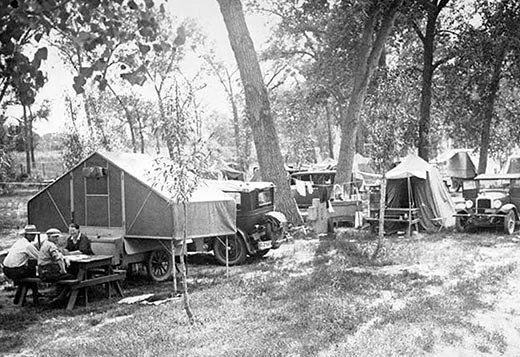
RV campgrounds in 1925 By the post-World War II era, RVs were popular again as young families and ex-soldiers became interested in less expensive camping. . Several major RV manufacturers began to improve their models, and plumbing and refrigeration systems began to become common in RVs; the first Chevy-chassis RV was built in 1946, sparking a frenzy among RV fans.
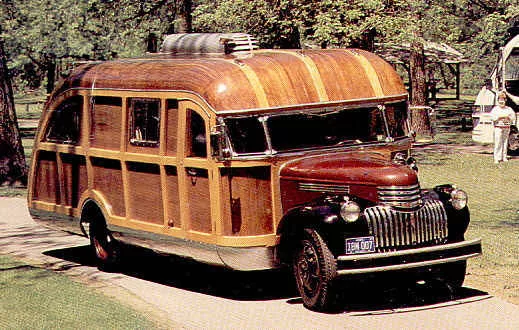
The first Chevrolet RV After the 1960s, the RV lifestyle became more of a household name due to its integration into pop culture. In the decades that followed, RVs also continued to receive attention from Hollywood. Whether it's the space travel RV in "Spaceballs, " the RV that serves as the CIA command post in "Meet the Fathers-in-Law, " the mobile drug lab for Old White and Pinky in "Desperado "* or the doomsday RV in "The Walking Dead" and "Finch," RVs are an important part of American culture today.
The recent history of modern caravanning: the emergence and development of the trailer caravan
The end of the First World War (1918), when millions of horses were killed in the war, led directly to the retirement of the horse-drawn caravan from history, while the early, uncomfortable internal combustion engine caravans caused a large number of people in Europe and America, desperate for a good rest and entertainment after the war, to turn their attention to the gypsy caravan: this caravan was a house and a carriage, and was very comfortable to live in. could a split caravan be built where the house was a house and the combustion engine carriage was a combustion engine carriage?
In fact, the idea was studied by French automotive pioneer Émile Levassor as early as 1895. After World War I, both the European and American publics finally discovered the potential of this type of caravan and officially kicked off the development of the trailer caravan.
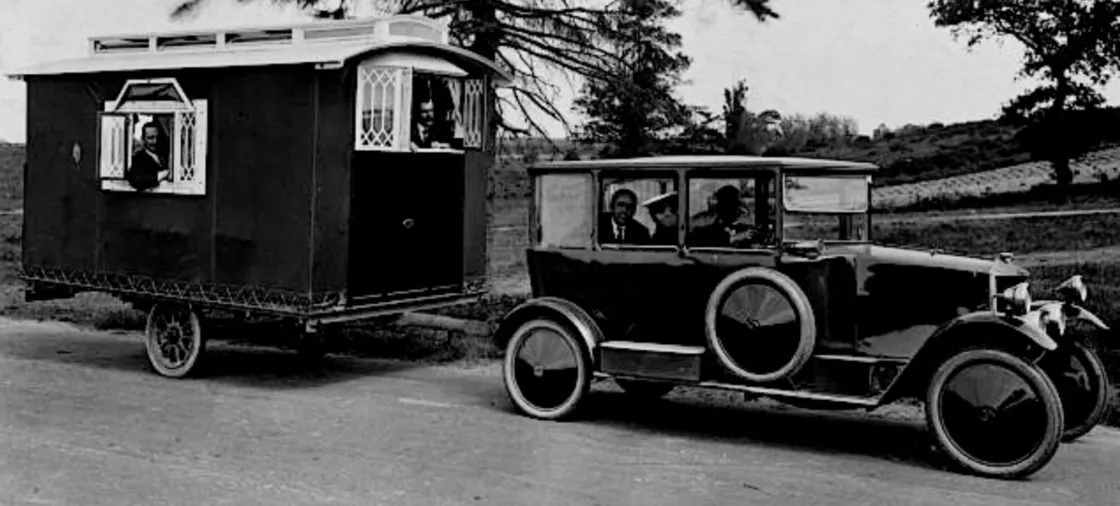
1922 British Trailer Caravans In 1919 Britain, solid wall caravans quickly became the most popular trailer caravans. The earliest British trailer caravans had canvas made to resemble a tent in construction, but they were not very popular due to the changeable climate in England. In the United States, on the other hand, tent-style trailers were long popular in the market due to better weather conditions in some areas and could soon be towed by Ford Model T's. The Detroit area became the heartland for the manufacture of such trailers due to its proximity to automakers and vacation destinations such as the Great Lakes, and soon evolved into morphing trailers that could be easily folded and unfolded. This variant of the trailer RV still exists today in some American off-road trailers.
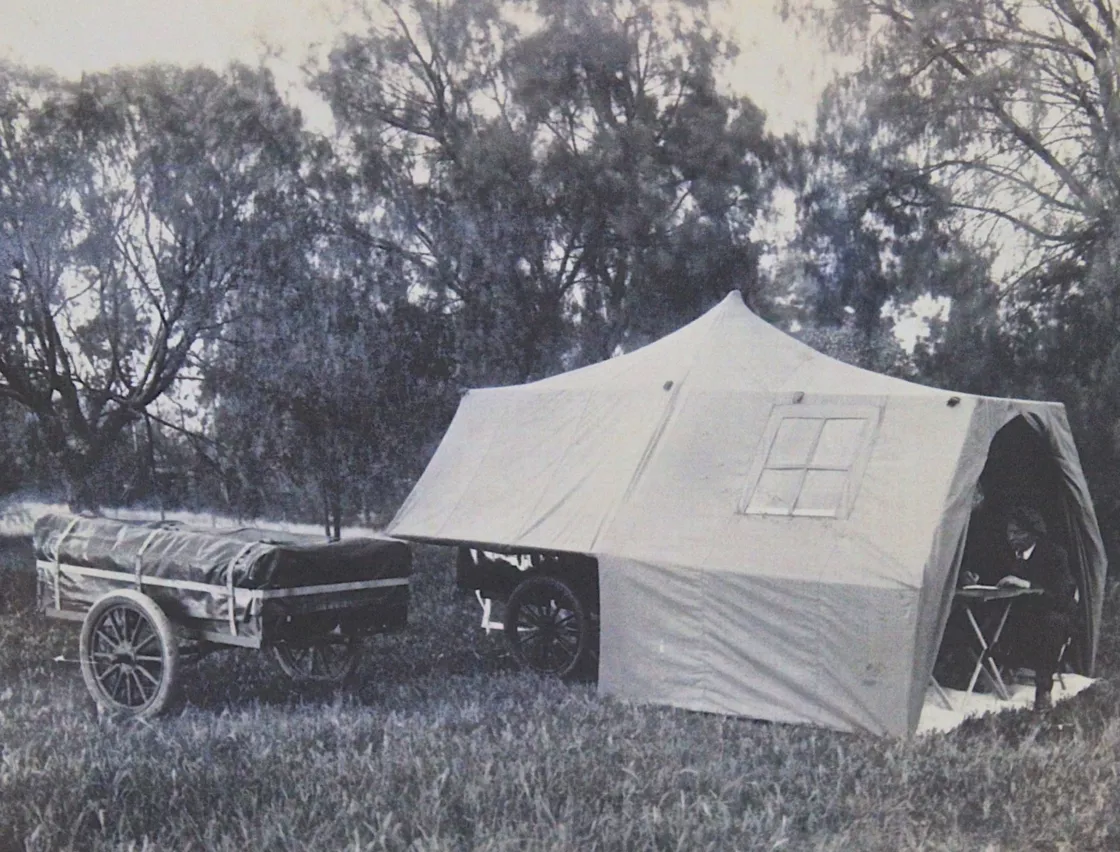 1915, American tent-style trailer before and after unfolding
1915, American tent-style trailer before and after unfolding 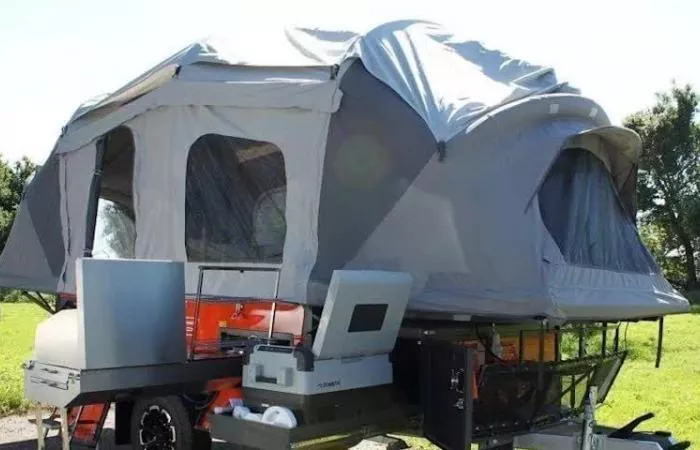
Today's American morphing trailer enters the 1930s and caravans made mainly of tarp material begin to fail to meet the needs of the American people. in January 1930 the Detroit Auto Show, a caravan built from solid wood was on display, featuring a 1.8 meter wide, 2.75 meter long fiberboard body, the same height and dimensions as a common family car of the time; it also included a small window on each side and the interior consisted of cabinets and some simple furniture, and sold for $400. This was a significant price for the time, but 116 were sold by the end of the show. By 1936, about 6,000 of these types of RVs had been sold, with total sales of about $3 million. This became the beginning of the modern RV industry and marked the end of the tent style RV era.
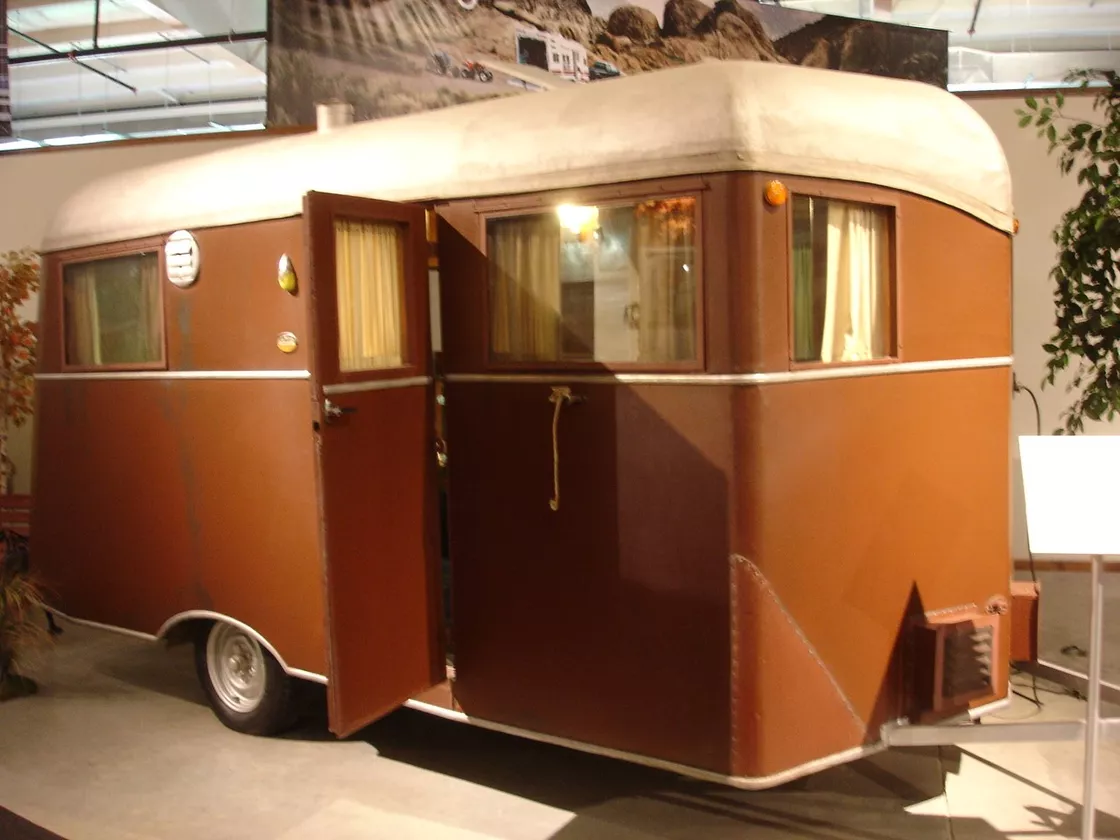
America's first all-solid material body tow
The Great Depression of 1929 was a pivotal year for the RV industry. In the United States, mass unemployment caused a large number of people to lose their jobs and houses and had to run around looking for work, and many people started buying trailer RVs, driving around looking for work during the day and sleeping directly in the RV at night. RVs.
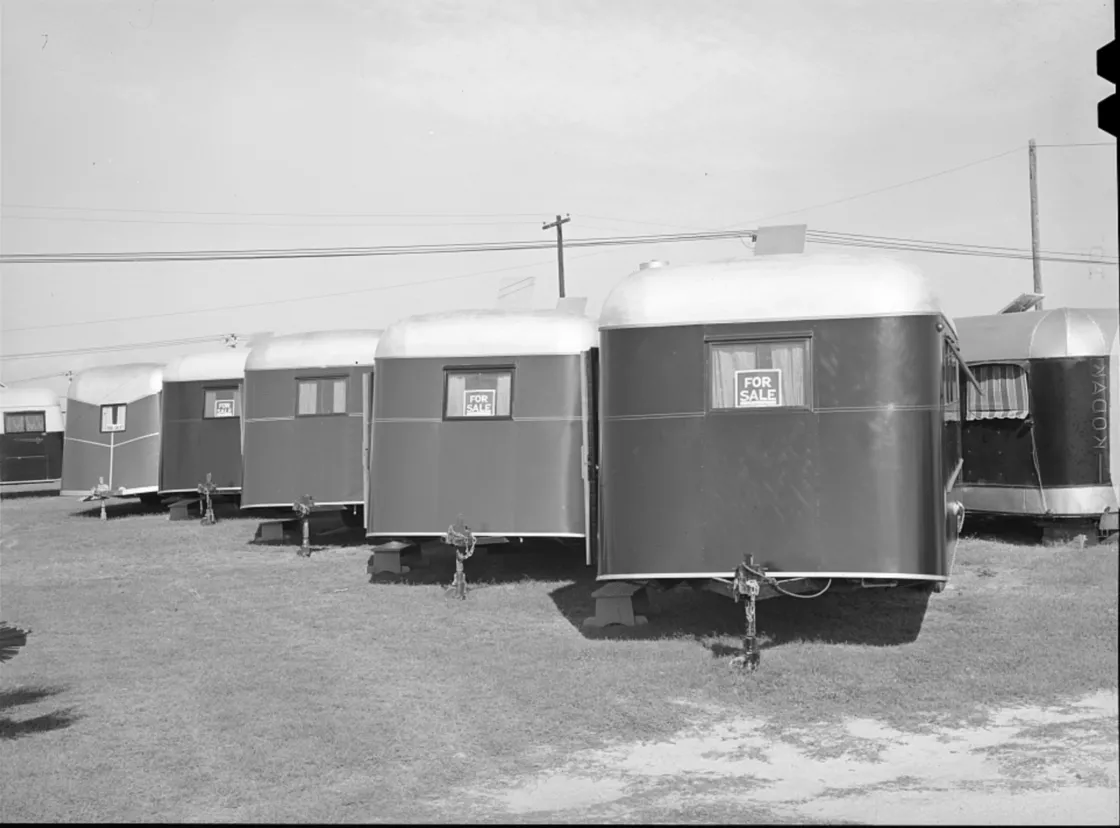
A trailer for sale somewhere in the United States in 1930 Photo credit Library of Congress After the Great Depression, trailer RVs in the United States began to grow in leaps and bounds. More and more RV manufacturers began to emerge, with more and more models full of character. In 1936, Airstream, the oldest RV manufacturer in North America, developed the first aluminum-hulled trailer that could accommodate four people; in 1937, the "teardrop" trailer became popular, named for its resemblance to a drop of water and its compact size, which could sleep two people.
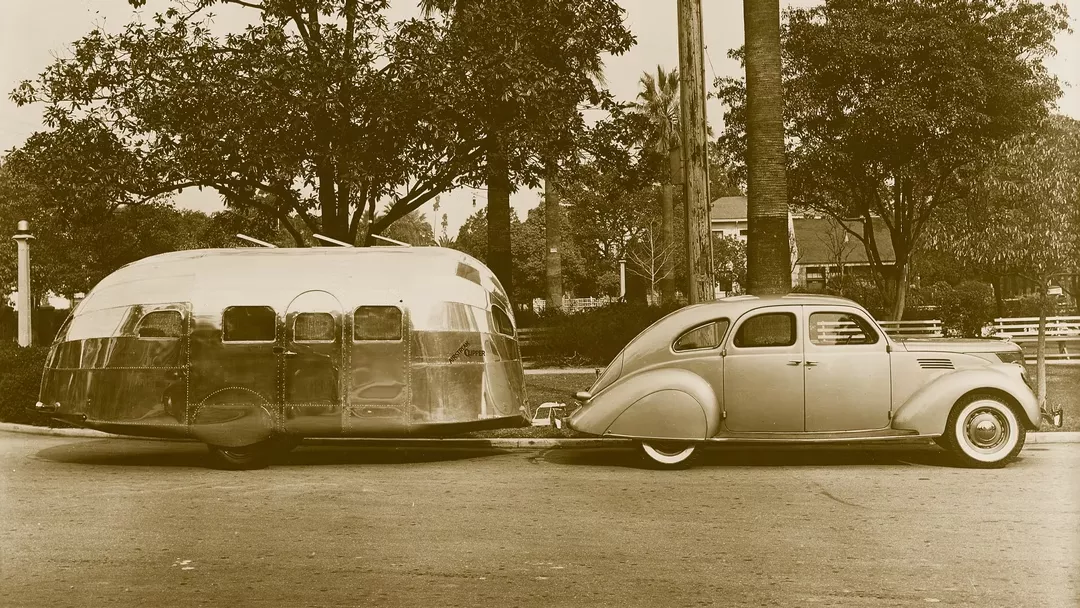
A 1936 Clearwind caravan, a look that is still hot today Image source Airsteam official website
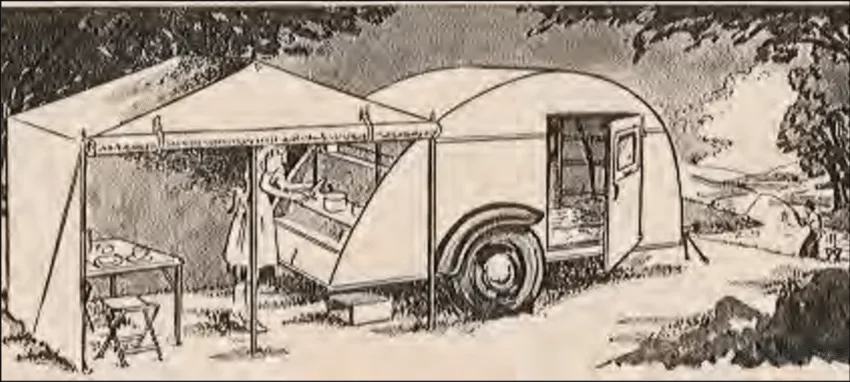
The teardrop trailer of the 1930s By the 1940s, the growth of trailer caravans had stalled due to World War II, but after the war ended many caravan manufacturers doors once again began to innovate and drive into the trailer RV a great deal, and the RV market entered a new era.
Legendary filmmaker Howard Hughes once designed and built eight trailer motorhomes to serve as his mobile dressing room, complete with lavish mahogany interiors and amenities such as bathrooms, refrigerators, stoves and air conditioning. Today, a large portion of sales of luxury RVs are also paid for by the film and television industry.
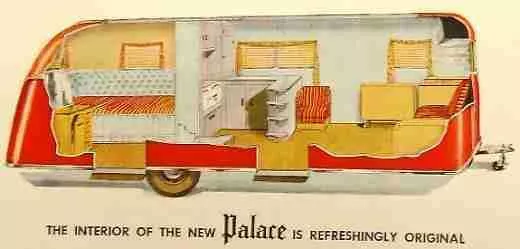
Howard Hughes's RV design diagrams The history of modern RV development: towards maturity
By the 1870s, the baby boomers in the United States were beginning to reach the age of breadwinners, and they further explored the potential of using RVs instead of renting a home.
In 1968, the son-in-law of the founder of Clearwind RV worked with the General Group to develop his first Class A motorhome. It started out on four wheels like a regular motorhome, but a few years later he added a rear axle with two tires to increase driving stability. The interior had a fixed queen-size bed, full kitchen facilities, a living room with a sofa and a cab.
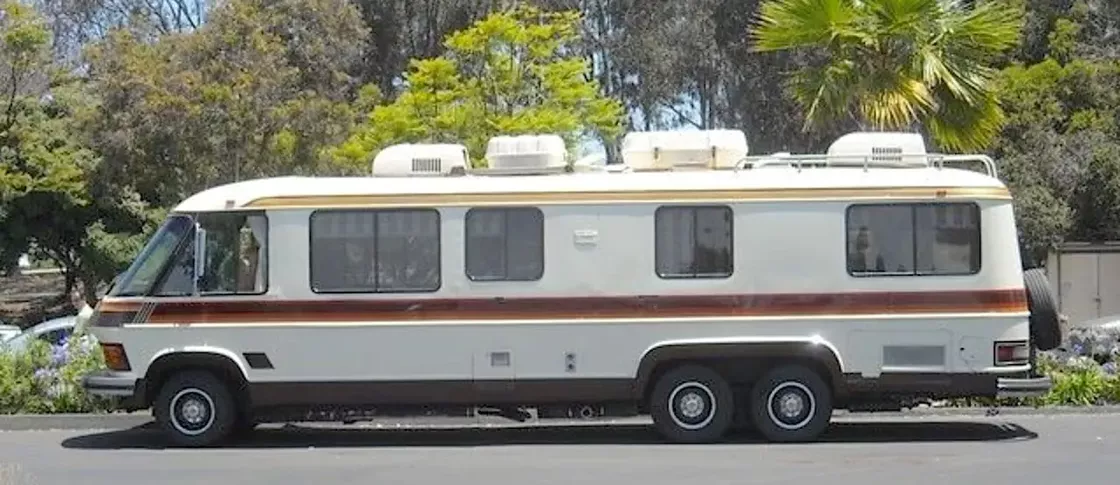
GM's Class A RV By the early to mid 1970s, the Toyota Group was starting to get a firm foothold in the American car market. At that time they had a pickup truck with a quarter-ton load capacity and fairly economical gas mileage. Toyota saw the growing RV market in the US and decided to take a piece of the action by converting the RV on this pickup truck.
Toyota defined this caravan as a mini caravan, sized for two people, with a bed above the cab, a bathroom at the rear, a kitchen in the middle and a small dining table for two people, a typical C-type caravan. To this day, the pickup caravan continues to dominate the world of caravan sales.
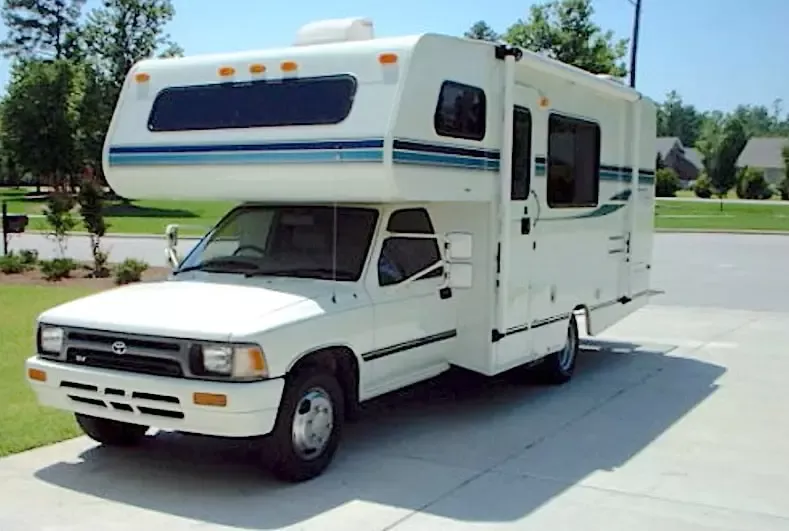
Toyota's Pickup Caravan came to the American market around the same time that the B-Motorhome began to appear. In fact, worldwide, the B-Motorhome predated the C-Motorhome, and shortly after World War II, Volkswagen introduced their B-Motorhome in Germany, thus starting the VanLife era in Europe.
In 1974, Roadtrek, today's North American B-Caravan sales king, built his first B-Caravan. Their goal was to provide the comfort of a Class A motorhome in an easy to drive, low-profile van. For the rest of the 20th century, Pleasure-Way and Roadtrek dominated the North American Class B motorhome and camper market.
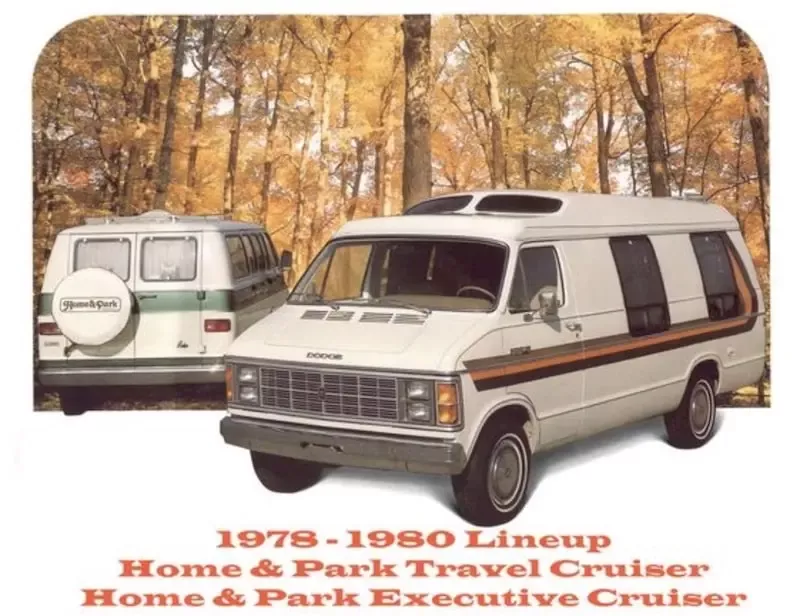
Advertisement for modern RVs in the late 1970s American Model B: 2008-present
The global financial crisis of 2008 also affected the RV industry, with a large number of established RV manufacturers closing down and merging with each other. In the wake of this, RV manufacturers around the world began to reflect and improve and innovate to cope with the vagaries of the market.
In today's era, the RV market is also becoming more and more diversified, with the American baby boomer generation retiring from the stage of history and a new generation of RVers beginning to demand Internet, intelligence and environmental protection. RV manufacturers are also responding to the times by applying more lightweight building materials and construction techniques to their RVs. Full-size refrigerators, granite countertops, fireplaces and full-size queen-size beds, which are only found in luxury homes, are also starting to appear in RVs.
At the same time, the RV market in China, the largest automotive market, has also started to develop rapidly, with regulations and policies for the RV market being introduced continuously after 2008, and consideration for the development of the RV market being added at the national planning level, for example, documents to encourage the healthy development of the RV market were issued during the 13th and 14th Five-Year Plans. The sales of RVs in China have also been growing rapidly in recent years, from less than 5,000 units in 2017 to 12,582 units in 2021, and in the first quarter of this year, 2,425 RVs were sold in China, an increase of 17% year-on-year.
Although at this stage the Chinese RV market is still dominated by products that imitate European and American RV products, some strong manufacturers are starting to conduct independent research and development for the national conditions. For example, SAIC Datsun, a rare domestic auto OEM and RV factory in one, has continued to iterate on its RVs for the national conditions, including support for charging piles, stir-fry friendly kitchens, campers launched for the camping fever, etc.
